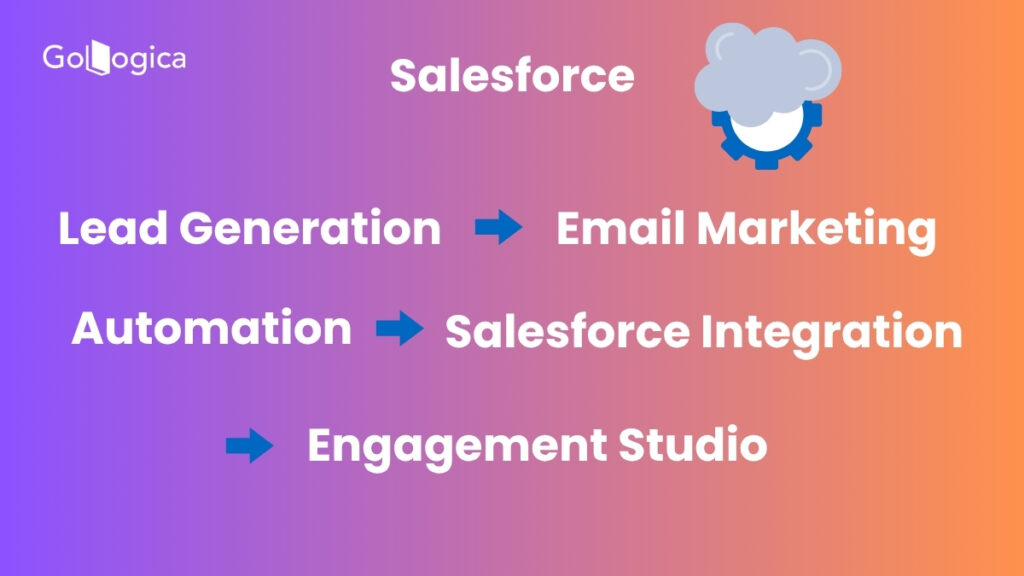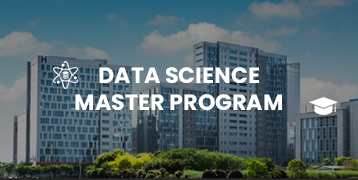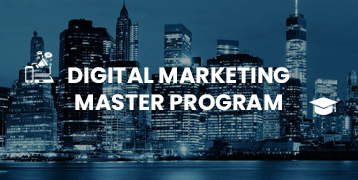
Table of Content
Introduction
Getting Started
- Setup
- Create Users
- Connect to Salesforce
- Data Migration
- Website Tracking
- Forms and Landing Pages
Key Features and Capabilities
- Lead Generation
- Email Marketing
- Automation
- Salesforce Integration
- Engagement Studio
Further Learning
- Trailhead
- Online Courses
Conclusion
Introduction
Salesforce Pardot is a powerful B2B marketing automation tool that enables firms to automate their marketing processes and produce high-quality leads. It is specifically meant for organizations with long sales processes to assist in supporting co-existence between sales and marketing teams by automating repetitive tasks, lead nurturing, and campaign optimization from one platform.
Effectively, Pardot enables the marketer to send segment-based email campaigns, monitor user interaction, score leads based on engagement, and pass on best quality leads to the sales team. It integrates well with Salesforce CRM training, providing the sales team and the marketing team with correct real-time data and insights, enabling them to work together and be efficient in the sales process.
For beginners, Pardot also comes with a user-friendly interface and bucketloads of features such as landing page builders, email templates, lead scoring, and ROI reports. Regardless of your desire to capture more leads, build deeper customer relationships, or win more conversion rates, Pardot carries a feature-loaded set to make your marketing next-level.
This tutorial guides you through the fundamentals of Pardot, how it works, why it will work for you, and how you can begin to use it in order to drive business success.

Getting Started with Salesforce Pardot
The Salesforce Pardot is a powerful B2B marketing automation software aimed at simplifying and optimizing the lead generation, nurturing and conversion process. New users may find it difficult to navigate Pardot. But, with a little background knowledge of what to do, there are some key areas that must be addressed like preparing your environment, working on users, connecting to Salesforce, data migration, turning on web tracking and form builder, landing pages to create a great base of marketing automation. To get you started, below is a detailed guide.
Setup
The initial setup is the first step toward starting out with Pardot. Here, it deals with the establishment of the underpinnings that fuel your marketing activities. After installing Pardot in the Salesforce Lightning App, your Salesforce admin can enable Pardot. When you have done that, you will see the Pardot Setup Assistant to get started.
In particular, when your organization has multiple Pardot Business Unit or has several divisions or geographical areas, you will be required to choose or verify Pardot Business Unit. Then you can set up your tracker domain (brand URL tracking) and validate your email sending domains and then set up the SPF and DKIM records to authenticate your emails sent to the rest of the world and you can get improved deliverability, and it also keeps your domain name safe. Next configure linked campaigns, these are used to sync Pardot campaigns with Salesforce campaigns to better report and track campaigns.
Create Users
The ability to create and manage users in Salesforce Pardot are necessary in deciding the roles, responsibilities and access level of all members of staff. The nature of the user in Pardot can be assigned in the following way Salesforce Administrator training, Marketing, Sales Manager or Sales.
In order to add users, visit Pardot Setting > Users and select Add User. Provide the simple information of the user, toward fingering name and email, and provide a proper level of responsibility and access privileges. In case your company has implemented Salesforce single sign-on (SSO), the users must be deployed in it as well with corresponding permissions. Roles assist in keeping systems intact because it ensures that the tools and data accessed by each team member are within their capacity. Periodical review of user access as well as disablement of inactive accounts is also recommended in order to have security.
Connect used to Salesforce
Among the most promising advantages of Pardot, we can distinguish a smooth combination with Salesforce CRM. This relationship enables both the sales and marketing to synchronize in real time their data and generate a single picture of leads and opportunities.
In order to connect, go to Pardot Settings > Connectors and make the Salesforce connector active. During the configuration, you will decide what data you want to move between the two systems including leads, contacts, and opportunities. Field mappings should be configured also because it will help in ensuring that Pardot field is properly aligned with Salesforce field. Turn on such features as marketing data sharing rules which allow you to determine which data it flows between Salesforce and Pardot and enable connected campaigns to unify reporting between platforms. And a well-setup connection is useful in getting sales reps to view marketing activity on their leads, and allow marketers to get a better view of pipeline impact.
Data Migration
For those moving into the Salesforce Pardot platform or already have an existing database, the process of migrating your data into the platform is a very important process. First start with auditing and cleaning the data you already have- purge the duplicates, fix the formatting problems and make certain that you have the right to email these people.
After that, export your data in a CSV file. Under Pardot, use Prospects > Import, and upload your file. During the import process, you can map each column of your CSV to the proper Pardot fields. It is also possible to set imported prospects to segmentation lists, add tags or start automation rules. You should be aware of your opt-in position: you can be sure you have no problems with the law of email marketing, such as GDPR or CAN-SPAM. Good organization and maintenance of a database mean future successful automation and segmentation.
Website Tracking
Pardot permits you to check the activities of the visitor on your site with the help of a tracking code and provides important insights into prospect behavior. This assists the marketers to know what is mostly compelling and when a lead is ready to be approached.
In order to track, visit Pardot Settings > Tracking Code, and copy the unique piece of JavaScript. Copy and paste this code before the tag on every page of the website you want to track. After its installation, Pardot starts monitoring the anonymous visitor. When such visitors complete a form or an interaction with a Pardot asset, they are turned into identified prospects. You can also use custom redirection to track banner, PDF, and third-party clicks.
Forms and Landing Pages
Prospect information capture and driving interest require forms and landing pages. Both have easy-to-use builders within Pardot so that marketers can have conversion-creating assets live online in an instant.
In order to build a form, go to Marketing > Forms and click “+Add Form.” Use the form wizard to choose layout, add fields, and add completion actions like sending autoresponder emails or flagging prospects as Salesforce users. To obtain additional information for tighter requirements, employ progressive profiling to collect additional information over time.
To build a landing page, go to Marketing > Landing Pages and select the “+Add Landing Page” option. Use a template or create one using Pardot’s editor. Insert copy, insert forms, and SEO URL-friendly. Use the landing pages as campaigns, gated content, or event registrations.
Key Features and Capabilities
Salesforce Pardot is designed to enable B2B marketers to harness tools that bring in efficiency, synchronize marketing and sales, and release actionable business insight. Its core capabilities are meant to capture, engage, and convert leads with utmost efficiency via the power of smart automation and real-time analysis. The following are the key capabilities that enable Pardot as one of the leading marketing automation platforms.
Lead Generation
One of the greatest aspects of Pardot is that it will create leads, which enable marketers to discover, capture, and qualify leads. Salesforce Pardot has customizable landing pages and forms that can be inserted onto your site or utilized in campaigns to grab contact information from prospecting that are interested. These forms of forms can be completed as progressive profiling so you can follow up with new questions the second time a lead comes back, and thus be able to gather more information without overwhelming them with everything at once.
For example, a company having a webinar can have a Pardot landing page with a form that will collect names, job titles, and email addresses of attendees. Once they are submitted, these leads will be entered into your database automatically and contacted through automatic campaigns.
Pardot also uses a tracking code to monitor anonymous page visitors. As soon as a visitor is a convert via a form, all they have browsed is accessible to your team so you can be sure where their interest and intent are. This enables marketers to score leads by activity and approach the most interested prospects first.
Email Marketing
Pardot email marketing is robust yet flexible, allowing the marketer to build, deliver, and track campaigns with ease. You can build and design great emails using the email builder feature of Pardot either by using the drag-and-drop editor or HTML and customize them based on data about the recipients. Segment your lists by behavior, demographics, or engagement so that you send to the most suitable people.
For example, you may send a product demo request to all the visitors on your price page three or more times last week. Salesforce Pardot also supports A/B subject line testing, open and click-through tracking, and viewing aggregate engagement. Dynamic content may also be applied to personalize email copy on some basis, such as industry or job title, to provide more targeted experiences. The system analysis teaches you why something is occurring and makes strategies more effective in the process.
Automation
Salesforce Pardot itself is essentially all about being efficient, and automation is at the very center of it. Automation rules, completion actions, and segmentation rules enable you to automatically execute repetitive tasks and trigger one-off tasks based on user behavior. Automation tools allow you to create intelligent workflows that respond to prospect behavior in real-time.
For example, if a lead is downloading a whitepaper, Pardot will, by itself, send a thank-you email, direct the lead to a salesperson, and put them into a nurturing campaign.
You can also update scores of a lead automatically, alert the sales team to key activities, or update fields in your CRM. Not only is this useful but also ensures each and every lead gets the right amount of attention based on its activity and position in the buyer’s life cycle.
Salesforce Integration
Pardot’s native integration with Salesforce CRM will probably be its most salable feature as a native feature, enabling two-way sync between sales and marketing. The sync gives marketers and salespeople real-time information about contacts and leads based on such things as form fills, email opens, and website traffic.
Integrated Engagement History and Campaigns dashboards provide mutual data of the campaign results on both ends. A sales person, for example, can click on a contact within Salesforce and have access to all the Pardot activity, including what emails were opened or what forms were filled out. This allows sales teams to have wiser conversations and close deals more quickly. Lead follow-up and assignment are also made easier through integration so qualified leads never slip through.
Engagement Studio
Engagement Studio is Salesforce Pardot’s lead nurture monster, where you design advanced, automated email campaigns that react to prospect behavior. It happens on a visual canvas where you build engagement journeys with triggers, rules, and action. You can customize these nurturing flows to different buyer personas or stages of the sales process.
For example, a company software business can build a 3-month program to learn about leads.
If the lead clicks on the first email and reads to view a link to a case study, the second can be for inviting them to a product demo. For non-engagement, they can receive a follow-up with an industry pain point blog post. Engagement Studio allows you to test, monitor, and refine such flows by performance metrics so that your message reaches at the right time and in relevance.
Further Learning
As fast as the digital world is evolving nowadays, it becomes necessary to keep up with learning new sets of skills. Two of the best ways to keep learning are Trailhead and Online Courses.
Trailhead
It is offered by Salesforce, free, gamified learning in which one is able to acquire Salesforce Pardot skills on their own time. It is accessible to both beginners and veteran professionals, and it is possible to learn from CRM basics to AI integration. Trailhead is what differentiates it, as it has a hands-on approach students actually resolve real problems in a Salesforce setting, earning badges and ranks on the way.
For example, if a sales director needs to automate the work, he can buy the Salesforce Flow module and view the application right away within his CRM environment. This is the beauty of Trailhead being learning and hands-on useful for actual work scenarios.
Online Courses
This is provide a more holistic and structured learning experience across different domains. Platforms like GoLogica provide industry-specific courses taught by specialists and academics. The courses might differ but can include a beginner’s tutorial along with advanced-level certificates in technologies such as data science, cloud computing, cybersecurity, and digital marketing. For example, a candidate willing to start career as a data analyst can enroll in GoLogica Salesforce Architect course with live classes, project work, and job-relevant training. This structured method is ideal for students who like structured classes, regular timings, and guide mentorship.
Trailhead and online courses are both utilized in upskilling, and their benefits vary depending on purposes. Trailhead is most suitable for a person who is specializing in Salesforce Pardot and related tools through a free self-study approach. Online courses are most suitable for a person who needs depth in a particular career stream, most often with certification and career advancement.
Whether you are learning Trailhead to develop expertise in Salesforce technologies or learning online for career development, continuous learning offers prospects for growth and career advancement. The choice to implement the right platform is determined by your learning style, goals, and demands of the sector you wish to service.
Conclusion
GoLogica Beginner’s Guide to Salesforce Pardot is an ideal for any up-and-coming B2B marketing automation. As a marketer, a sales executive, or prospective digital marketer, the guide allows you to discover how Pardot automates customer engagement, campaign management, and lead generation.
By covering major subject matter areas such as email automation, lead scoring, campaign tracking, and return on investment, the guide equips students with hands-on information that can be applied to real marketing campaigns. With Salesforce powerful CRM integration, Pardot enables marketing and sales departments to work together and expand the business.
What is so valuable in this course is the focus on hands-on learning and application in business. Not only is one imparted with theoretical knowledge, but also with the skills to put Pardot to practical use in real-life scenarios. The beginner’s approach to it makes it possible for even students who have no background in Salesforce to learn and perform well.
With today’s competitive business scenario, becoming a Pardot master is progressing towards enhancing your online marketing skills. GoLogica course is designed to bridge your skill gap and make you an ideal candidate for marketing automation career prospects. Start your learning today and prepare yourself to become successful with Salesforce Pardot.










